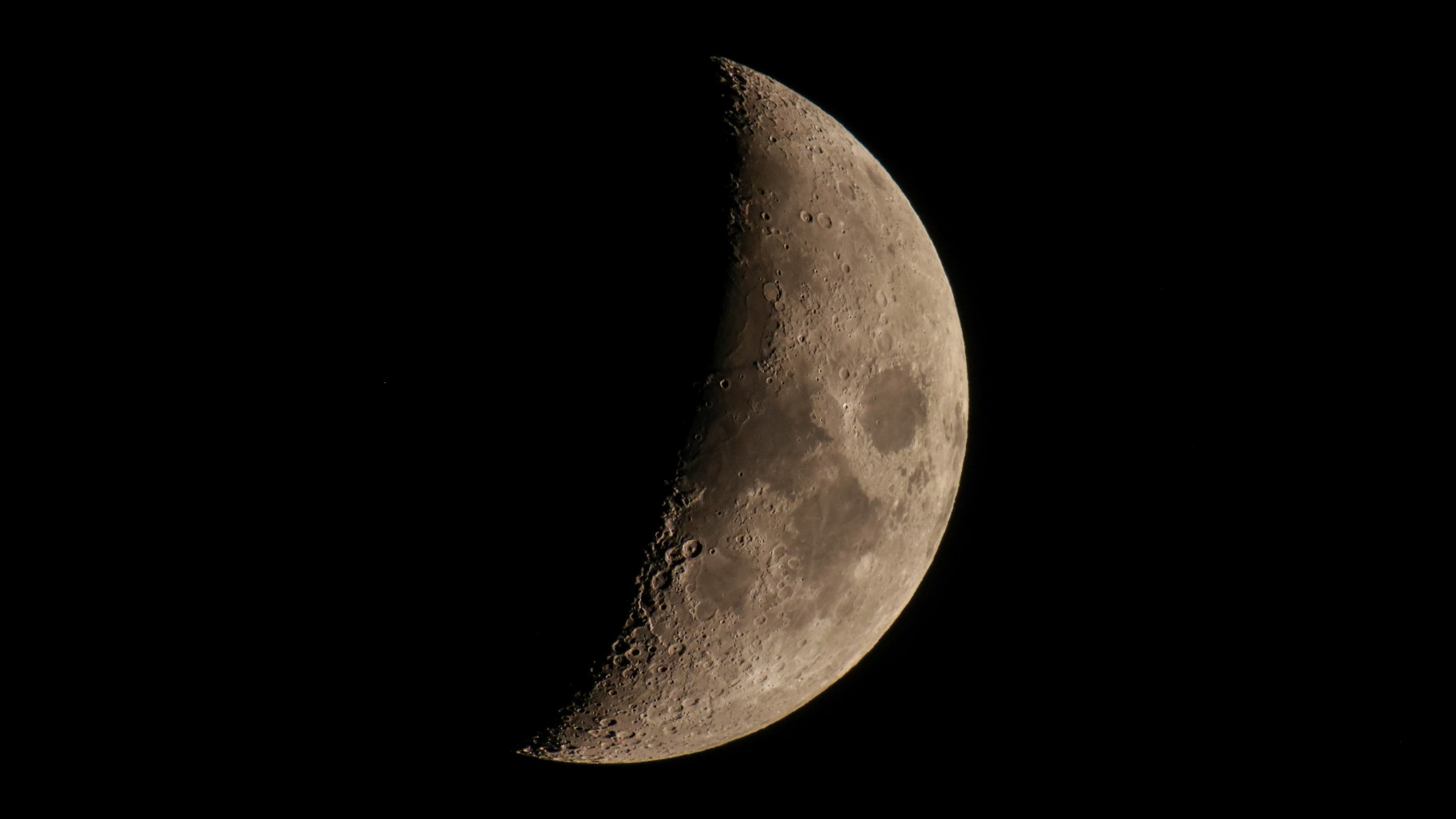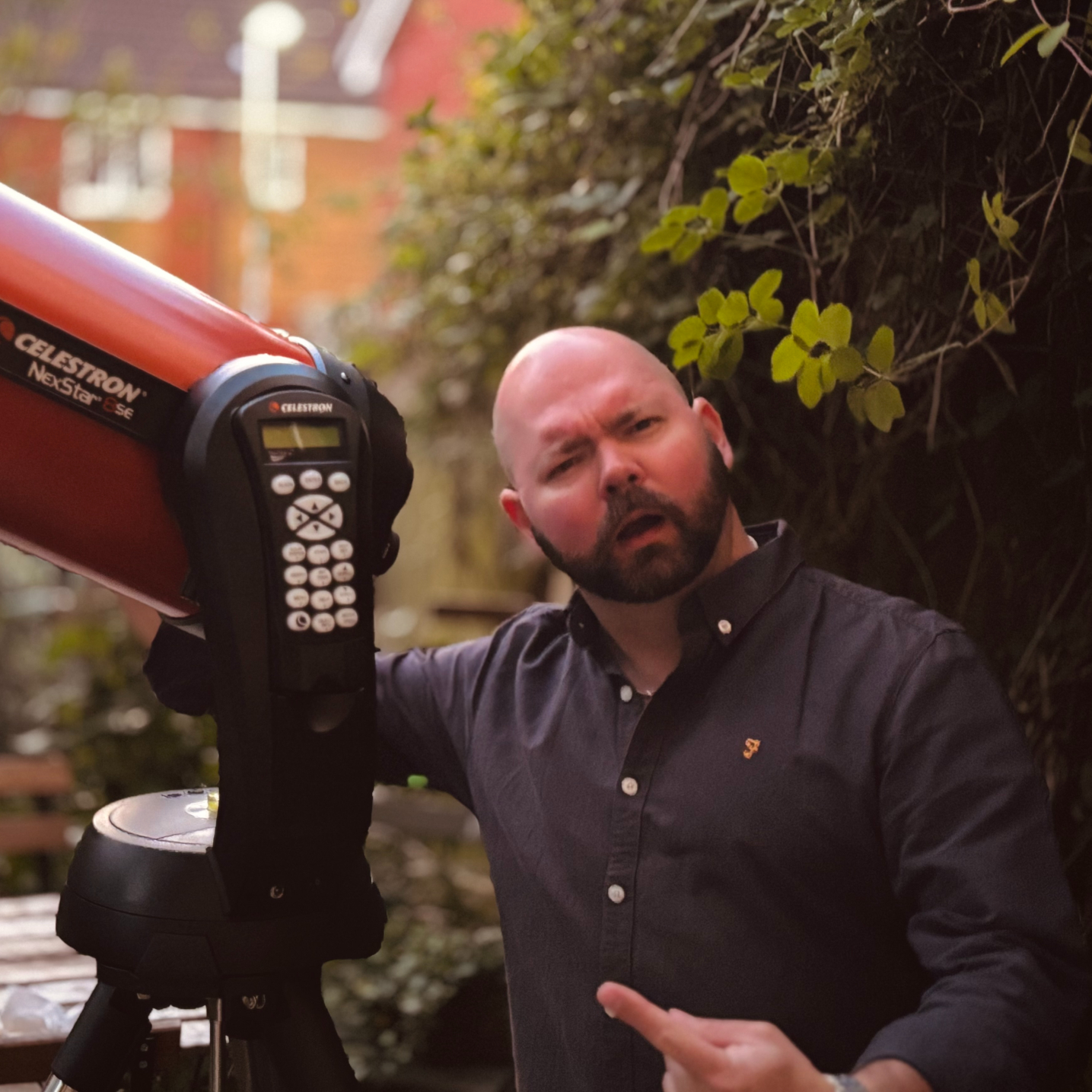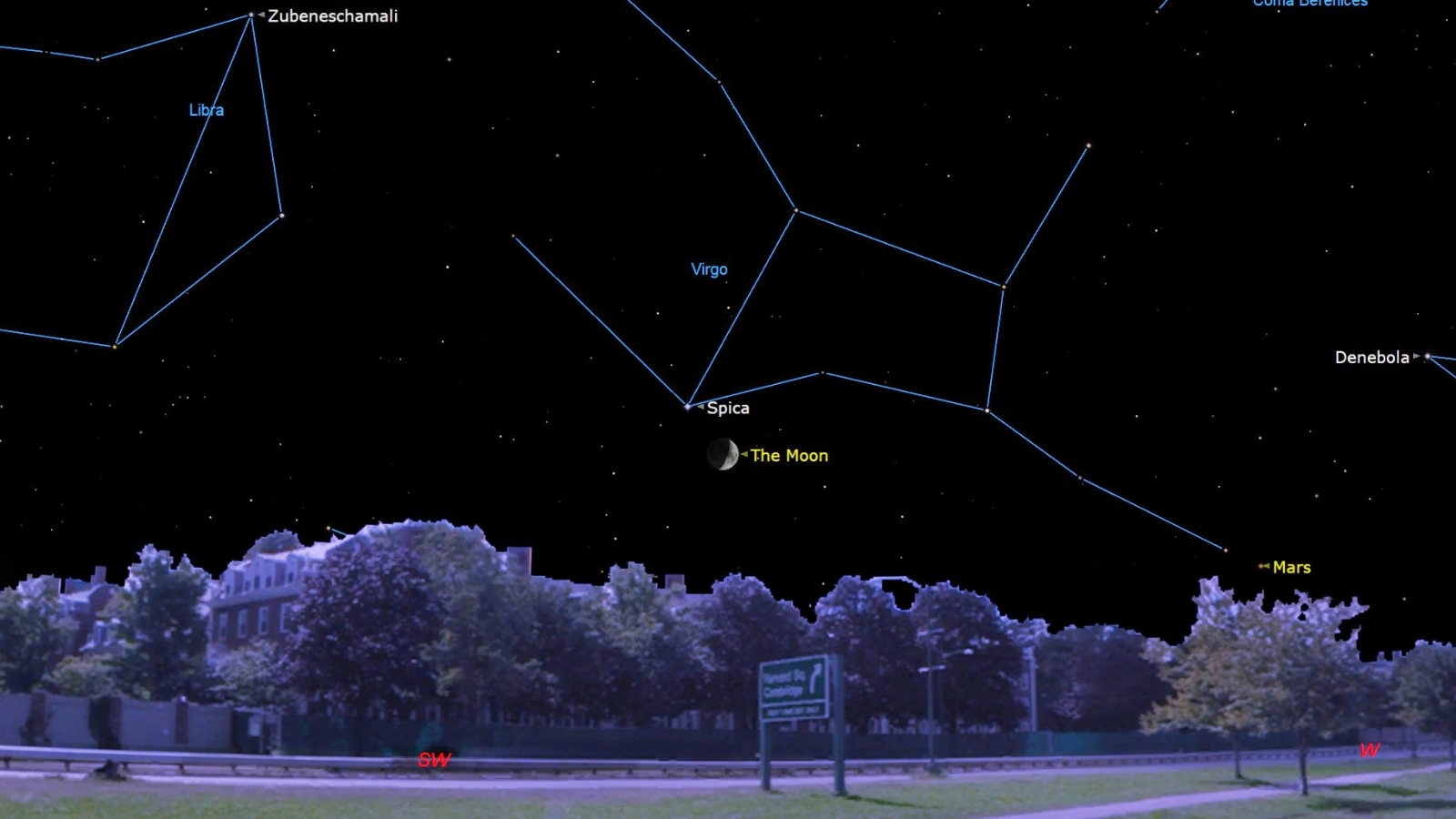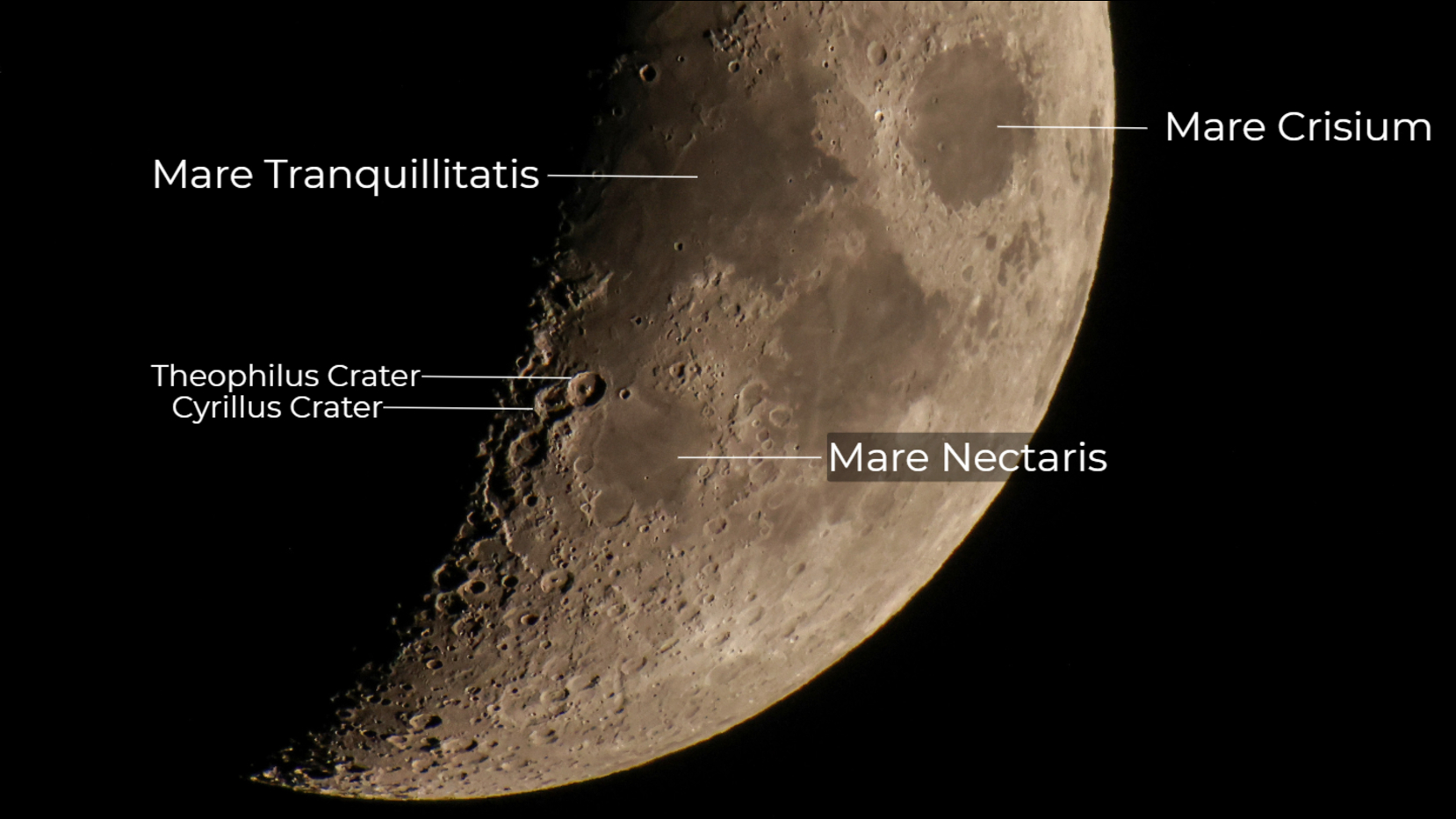See the crescent moon shine beside blue star Spica at sunset on July 30
Spica and the moon will appear over the southwestern horizon at sunset.

Don't miss the waxing crescent moon shine alongside Spica and the stars of the constellation Virgo in the hours following sunset on July 30.
Look 20 degrees above the southwestern horizon in the hour following sunset on July 30 to find the waxing crescent moon — now 32% lit — hanging in the evening sky, with Spica shining as a bright point of light less than 4 degrees to the upper left of the lunar disk. Remember, the span of your clenched fist held at arms length is approximately 10 degrees in the night sky, while the tip of your little finger measures roughly 1 degree!
Despite its appearance, Spica is not a single star, but rather a binary system composed of a pair of massive stellar bodies that orbit one another once every four days at a separation of approximately 11 million miles (18 million kilometers). The combined light of these stars shines over 12,000 times brighter than our sun, making Spica a prominent feature in the night sky, despite its remote position 250 light-years from Earth.
Both the moon and Spica will set a little over two hours after the sun on July 30 for viewers in the U.S, with the binary system growing more conspicuous as our parent star slips farther below the horizon.
Around this time, the moon's Mare Crisium ("Sea of Crises") is visible as a tiny dark oval visible to the naked eye on the northeastern region of the lunar surface, with the combined expanses of Mare Serenitatis ("Sea of Serentity") and Mare Tranquillitatis ("Sea of Tranquility") dominating the equatorial region close to the line separating night from day.
Stargazers with access to a small telescope with an aperture of 4 inches or more can also pick out the prominent Theophilus and Cyrillus craters on the northwestern shore of Mare Nectaris ("Sea of Nectar") on July 30. Note Theophilus' pronounced central peak, which formed when liquified rock rebounded in the aftermath of the cataclysmic asteroid strike that heralded its creation.
Looking to explore the lunar surface for yourself? Then why not read our roundups of the best telescopes and binoculars available in 2025. While you're at it, be sure to check out our guide to observing the moon with a telescope, or photographing its ancient terrain using a DSLR camera.
Breaking space news, the latest updates on rocket launches, skywatching events and more!
Editor's Note: If you would like to share your astrophotography with Space.com's readers, then please send your photo(s), comments, and your name and location to spacephotos@space.com.

Anthony Wood joined Space.com in April 2025 after contributing articles to outlets including IGN, New Atlas and Gizmodo. He has a passion for the night sky, science, Hideo Kojima, and human space exploration, and can’t wait for the day when astronauts once again set foot on the moon.
You must confirm your public display name before commenting
Please logout and then login again, you will then be prompted to enter your display name.


